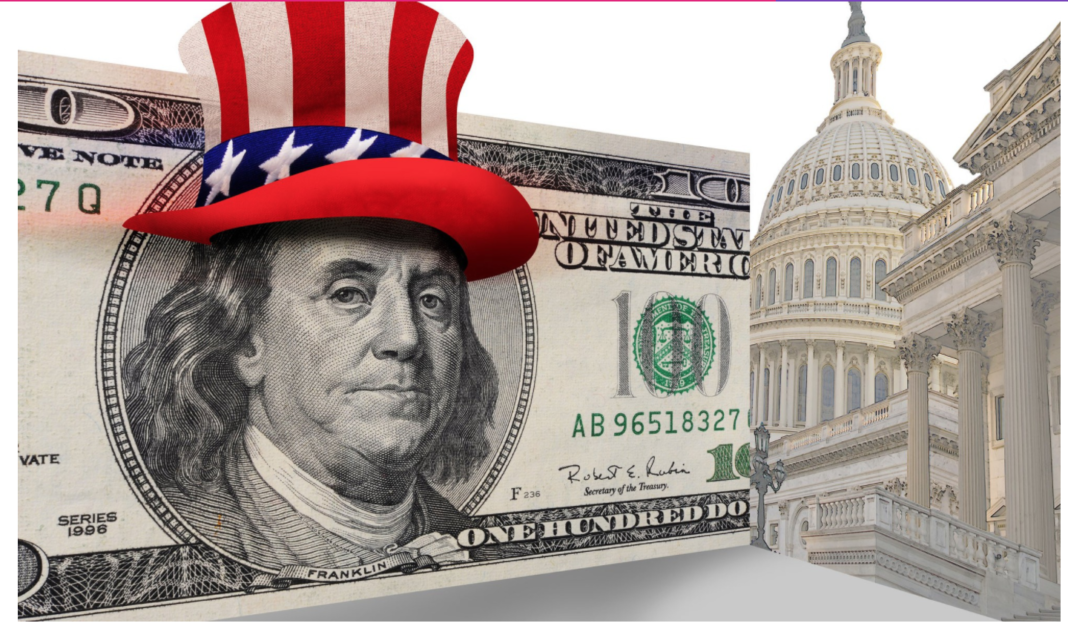Future historians looking back on the events of 2020 and 2021 are going to have their work cut out for them. From the coronavirus pandemic to the fallout of the 2020 election, the first two years of the 2020s have already proven to be some of the most important in recent decades.
But among all of the far-reaching reforms, policies and societal changes experienced since the start of 2020, perhaps the one that has the potential to have the most substantial long-term impact on public policy is the middle class’s growing dependence on government aid.
Historically, most federal aid programs have been designed to help impoverished Americans, especially families and those with disabilities. But policymakers now seem more focused than ever on finding ways to get government funds into the hands of able-bodied middle-income earners — and middle-income Americans are gladly taking the bait.
For example, the American Rescue Plan, passed in March 2021, created a temporary yet substantial increase in the Child Tax Credit for the vast majority of U.S. families, including most middle-income earners. And it allows them to collect much of the credit through monthly cash payments from the government, rather than having to wait until tax refunds are issued in 2022.

Millions of people in the middle class are now receiving monthly payments of $250 to $300 for every child in their household, and the full credit is available for couples earning as much as $150,000.
Many middle-income earners have also benefited from one of several “stimulus” checks distributed under the Trump and Biden administrations. The American Rescue Plan’s stimulus component provided adults with $1,400 payments.
According to an analysis by the Institute on Taxation and Economic Policy (ITEP), the overwhelming majority of U.S. households will receive thousands of dollars in stimulus and tax credits in 2021 alone. Working and middle-class families earning $65,000 to $111,300 will receive an average of $2,910 in stimulus and $620 in child tax credits.
Additionally, ITEP estimates middle-income families earning between $111,300 and $247,400 will receive an average of $2,260 in stimulus money and $570 in child tax credits.
Direct cash payments are not the only forms of aid now being offered to the middle class. In March 2020, President Trump and Congress froze most federal student loan payments, a provision that was included in the CARES Act.
At first, the freeze was supposed to be only temporary, but President Trump and then later President Biden repeatedly delayed the payment pause. Tens of millions of borrowers have not been required to make a single payment for more than a year now, regardless of how much money they earn, a provision that has benefited middle-income earners and professionals more than any other group.
Congressional Democrats don’t want the payment freeze to stop soon, either. Dozens of powerful members of Congress, including Senate Majority Leader Chuck Schumer (D-N.Y.) and Sen. Elizabeth Warren (D-Mass.), have been lobbying the Biden administration for months to delay student loan payments again, this time to March 31, 2022, at the earliest.
Schumer, Warren and other members of Congress have also said that they want the freeze to continue until the United States reaches “pre-pandemic employment levels,” no matter how long that takes. (And it’s possible it could take decades, since unemployment was historically low just before the outbreak of COVID-19.)
Additionally, as part of their recent $3.5 trillion climate, education and poverty plan, President Biden and congressional Democrats have proposed a long list of other government programs that would provide funds or services to the middle class.

Democrats’ proposal would create a universal pre-K program for children three and four years of age, subsidies for child care, and it would make permanent the Child Tax Credit expansion mentioned earlier.
To date, Biden and Congress have not provided any plan to pay for these government programs. After spending more money than at any other time in history in 2020, the U.S. deficit is expected to be a whopping $3 trillion by 2022.
The White House’s budget predicts that the annual national deficit will not drop below $1.3 trillion over the next 10 years, and that from 2022 to 2031, the United States will add more than $14.5 trillion to our already massive national debt.
Washington could be hooking America’s middle class on government cash, creating an entirely new class of people dependent on government programs and driving the national debt to unprecedented levels in the process.


